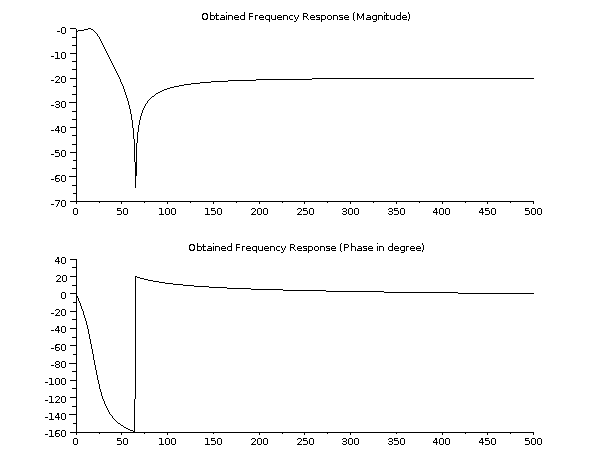

win=window( kr,n,alpha) Chebyshev Window.ĩ Window Functions for FIR Filter Design Hamming Window. win=window( hm,n) Kaiser Window.Ĩ Window Functions for FIR Filter Design Hamming Window. Filter design by different in-built functions available in scilab.ĥ In this slide i will be describing different windowing techniques.this can be performed by different window functions with window length by using the in-built command window().Ħ Window Functions for FIR Filter Design Hamming Window.ħ Window Functions for FIR Filter Design Hamming Window. written by: Dhidik PrastiyantoĢ.1 Manas Das Indian Institute of Technology, Bombay March 1, 2012Ģ Introduction What is a filter? A filter is a device or process that removes some unwanted component or feature from a signal.ģ Objective In this presentation i will show how differnt types of filters can be designed using scilab.Ĥ This presentation is being divided into following parts: Different windowing techniques. The script will show input signal and output signal of LPF which just been implemented. Let we plot the input and output of this filter. To apply filltering to the signal, we could write the following code: Fifth parameter is error vector whic is used only in chebisev and elliptic technique Fourth parameter is cut of frequency in normalization form It is also availabe other methods such as cheb1, chep2 dan ellip. Third parameter is technique which is used to design. Second parameter is filter type which lp= lowpass, hp=highpass, bp=bandpass. We could use higher order filter but please remberber taht higher order filter increase the number of calculation iterations. The normalization of 5Hz is 0.005 and 50 Hz is 0.05. In this case we select the frequency beetween signal and noise. Using Scilab, we can use available technique to design the filter such as Butterworth, Chebisev and elliptic.ĭeciding the cut of frequency is very easy by looking at freuency of signal and noise.
#SCILAB FILTER DESIGN HOW TO#
The important note is how to decide the cutt off frequency of the system. To seperate the signal from noise, we could use low pass filter. The noise is sinusoidal signal 50 Hz which also has 4 seconds time. Original signal is sinusoidal signal 5 Hz for 4 seconds. The following will be simulated noise cancellation using generated signal. Band Rejection: reject signal starting from cut off frequency 1 to cut of frequency 2.įilter coud be used to get the desired signal for example when EKG signal is disturbed by noise wich has lower frequensi signal. High Pass Filter (HPF): admit the signal over the cut of frequency Band Pass FIlter (BPF): pass signal from cut off frequency fc1 to cut of frequency fc2 Low Pass Filter (LPF): allow signal which as lower frequency than the cut off frequency. As we know that base on frequency respon filter could be classified into: In this article i would like to explain how to design filter using signal processing tool in Scilab. AS open source software, we could participate to develop the library of this software.
#SCILAB FILTER DESIGN SOFTWARE#
The software could be download freely from scilab website. Scilab is an open source software for numerical computation.


 0 kommentar(er)
0 kommentar(er)
